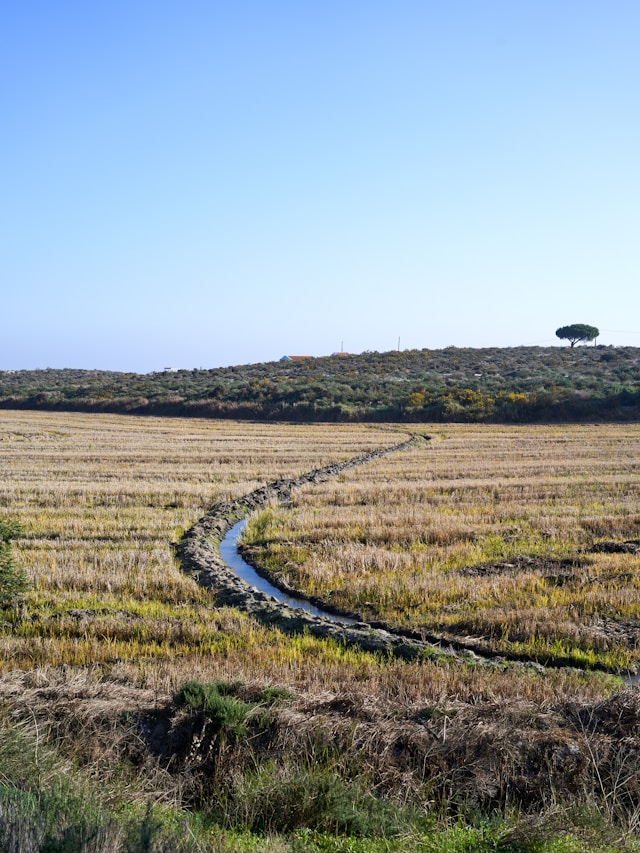by Gweneth Johnsen, AWC Madrid
 If you’ve read the newspaper lately, it might not seem like Spain has a water scarcity problem. Last November, for instance, the province of Valencia received more rain in a single day than typically falls there in an entire year. But that’s not good news. The rain resulted in flash flooding which claimed 235 lives in one of our country’s deadliest natural disasters.
If you’ve read the newspaper lately, it might not seem like Spain has a water scarcity problem. Last November, for instance, the province of Valencia received more rain in a single day than typically falls there in an entire year. But that’s not good news. The rain resulted in flash flooding which claimed 235 lives in one of our country’s deadliest natural disasters.
Events like the Valencia flooding highlight changes to Spain’s climate – changes we’re poorly prepared to deal with. While extreme weather like droughts are becoming more frequent, coordination between the government entities – whether local, regional, national or the European Union – who should be leading on the issue of climate change, is almost non-existent. This has resulted in delays for both long-term water planning and emergency response. We saw the result of both in Valencia.
Within the European Union, Spain is second only to France in having the most land under cultivation. Agriculture accounts for 2.3% of the country’s GDP, contributing €37 billion annually to the Spanish economy, according to 2023 statistics. But climate change has made traditional rainfed agriculture more unreliable; as a result, our farmers have turned to automated drip irrigation. Today, drip irrigation accounts for 80% of Spain’s total water consumption, even though only 23% of our land is cultivated.
Unfortunately, Spain’s water delivery infrastructure is aging and inefficient. It’s estimated that as much as 25% of the country’s drinking water is lost through leaks, jeopardizing the availability of water for agriculture and other essential uses. This situation has put the focus back on a time-tested, low-tech/low-cost, community-rooted alternative: acequias.
Acequias have existed in Spain since the time of the Romans, or even before. But it was the Moors of Al-Andalus who, over a thousand years ago, perfected the irrigation system they founded by building an elaborate network of earthen canals stretching over 15,000 miles in the arid regions of Almería and Granada.
More than just irrigation canals, however, acequias are living infrastructures. They have porous walls that allow some of the water they carry to seep into the ground. This “sponge effect” refills aquifers, and the stored water reemerges as springs during the dry season when it’s most needed. They also slow water’s descent from the mountains to the plains. This prevents runoffs that could otherwise overflow rivers or evaporate from lakes. Acequias promote groundwater retention, stabilize ecosystems and provide a reliable, seasonal water source for agriculture.
Acequias also serve another purpose which is often overlooked but no less important. They require local cooperation and governance, because they are maintained by all of the local water users themselves and not by a governing body.
Unfortunately, in the 1960s, the acequia system fell into disuse and disrepair as Spain built reservoirs and saw the rise of industrial farming. In addition, a rural exodus drained local manpower, leading to the abandonment of nearly 20% of the acequia network in Granada’s Sierra Nevada region alone.
Since 2014, however, the University of Granada’s Laboratory of Biocultural Archaeology has been working to restore abandoned acequias with the objective of not only reintroducing the flow of water but also educating the local farmers who use and maintain them about their environmental importance.
With over 15,000 miles of acequias in 550 farming communities scattered across Almería and Granada, the potential is great. But so is the challenge. Real progress is being held back by industrial agriculture, which prioritizes high yields over long-term sustainability.
In terms of productivity, traditional farming methods will never match those of industrial farms. But when viewed through a wider lens, one that values climate resilience and cultural heritage, acequias are efficient, effective and relevant. Restoring them is not just about reviving an ancient system; it’s about ensuring a more sustainable future for Spain’s water, land and people.
Photo by Steffen Lemmerzahl on Unsplash
Resources:
Campos, A. (2024) Spain’s Water Problem Agenda Pública
DW Channel (2024) The Legacy of the Moors in Spain|Focus on Europe YouTube
Greenpeace (2023) The Irrigated Agricultural Bubble in Spain- an Executive Summary
Méheut, C. (2023) Facing a Future of Drought, Spain turns to Medieval Solutions and ‘Ancient Wisdom’ The New York Times
Walker, Kira. (2022) The Moorish Invention that Tamed Spain’s Mountains BBC.com
European Policy Brief (2015) The Impact of European Water Policy on the Water Cultural Legacy

